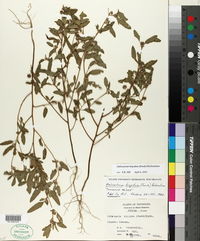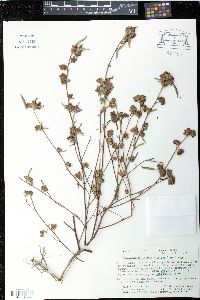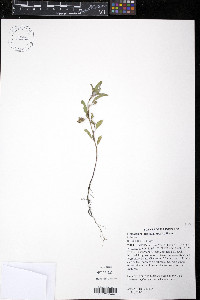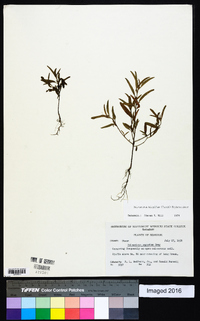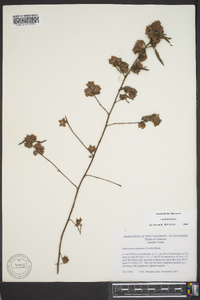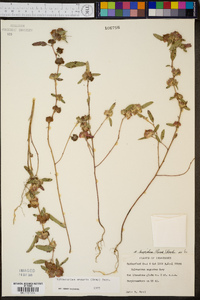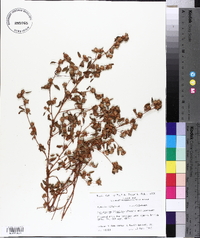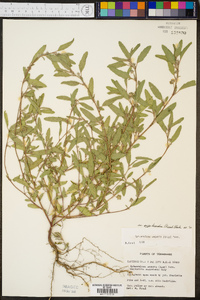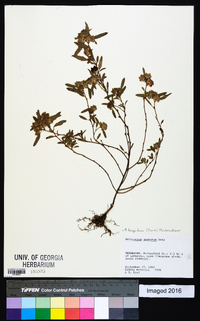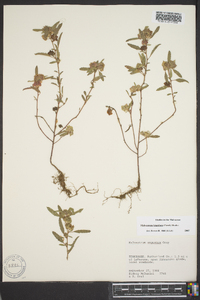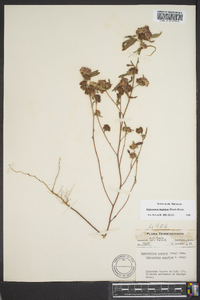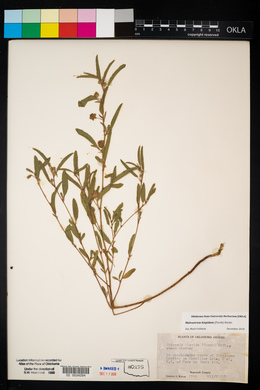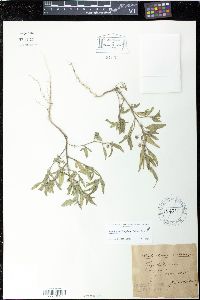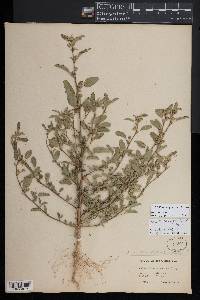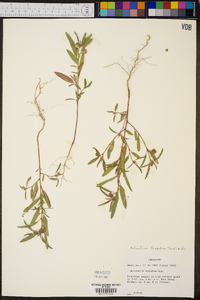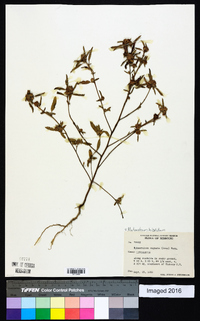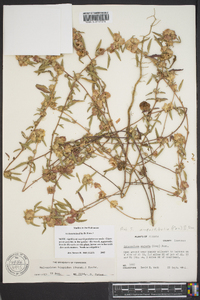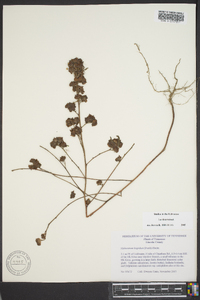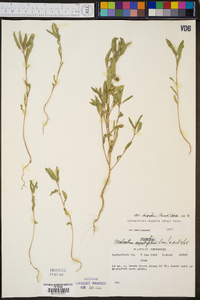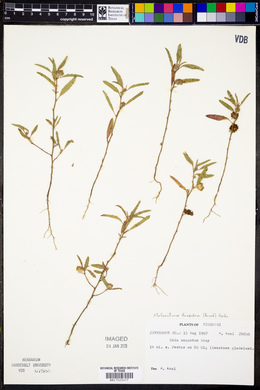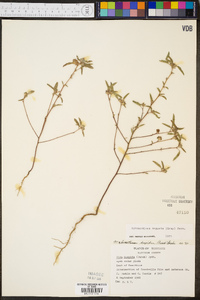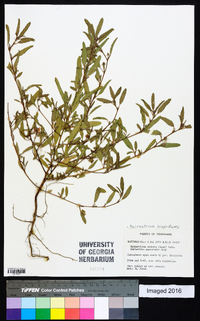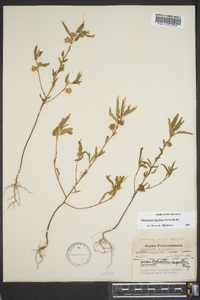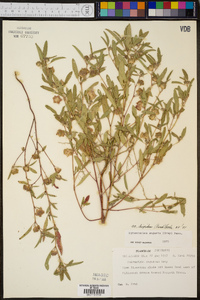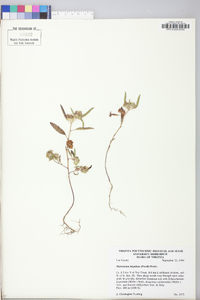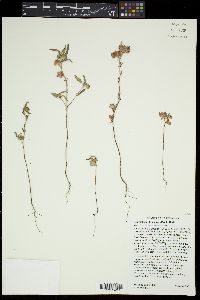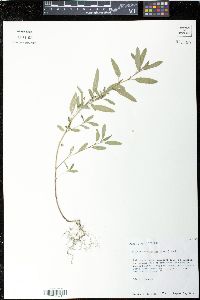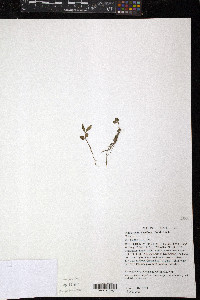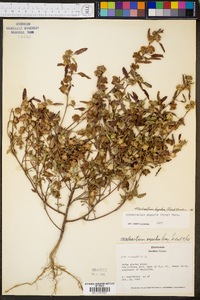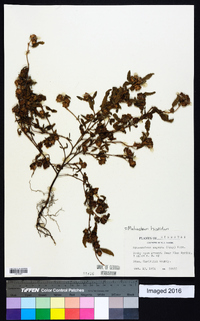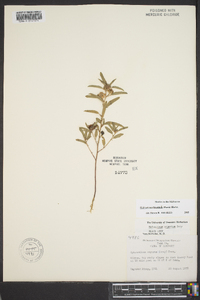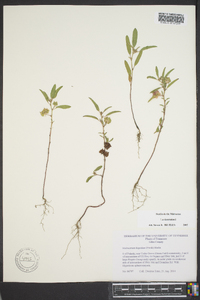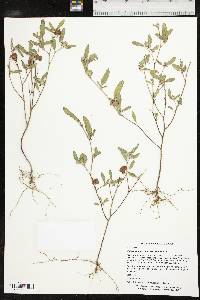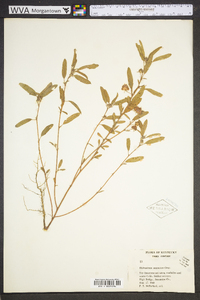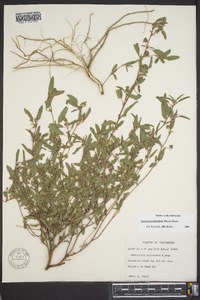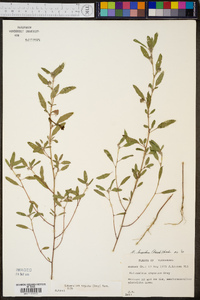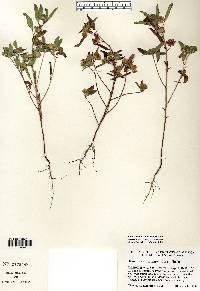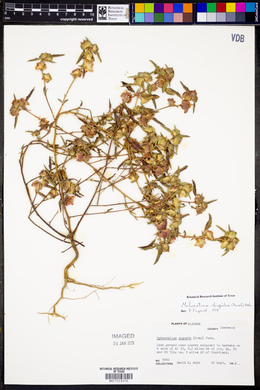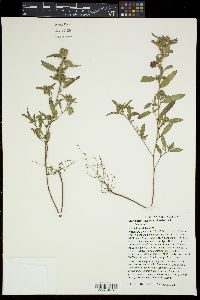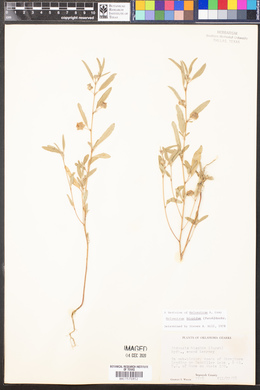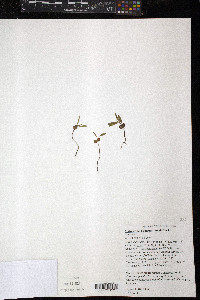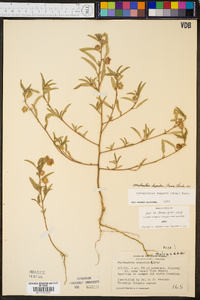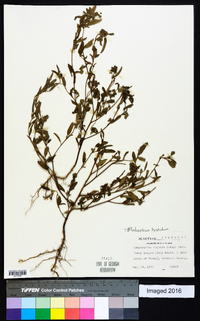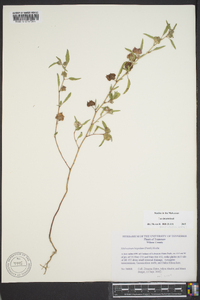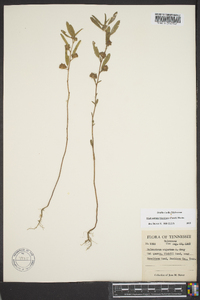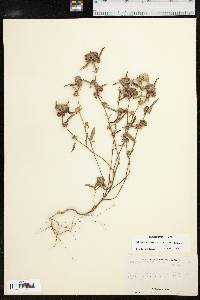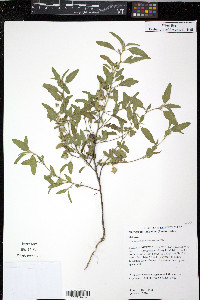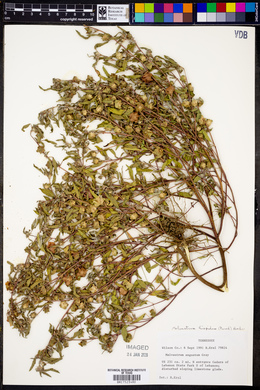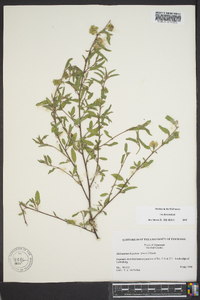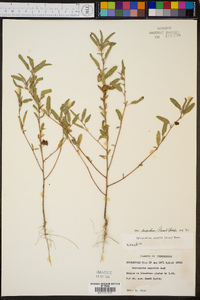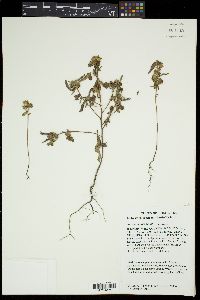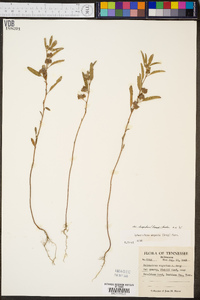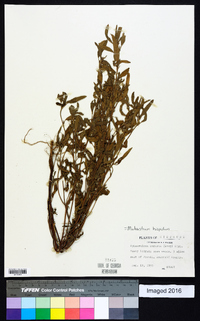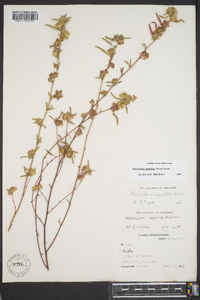
|
|
|
|
Family: Malvaceae
Hispid False Mallow
|
Annual herb 20 - 50 cm tall Stem: erect, branched, and covered with appressed, four-branched hairs. Leaves: many, alternate, short-stalked, longer than wide (seldom over 1 cm wide), linear-oblong or oblong to narrowly elliptic, with scattered short teeth, and a covering of two- to three-branched hairs. Flowers: axillary, short-stalked, small (0.6 - 1 cm wide), yellow, radially symmetric with five petals, winged sepals, and three narrowly linear bractlets immediately subtending the sepals. Sepals: five, very close touching but not fused, hairy (hairs two- to three-branched), broadly egg-shaped with somewhat abruptly pointed tips, and at maturity with lobe edges turning outward to form a five-winged cup, which persists in fruit. Petals: five, yellow, small (3 - 4.5 mm long), usually shallowly notched at the tip. Stamens: numerous, but filaments fused into a hairless to smooth-hairy, long tube (nearly as long as petals) with the anthers protruding toward the tip. Pistil: enclosed by the stamen tube, with five or six superior carpels (ovule-bearing structures), five or six styles coming up through center of stamen tube, and ending in five or six round-tipped stigmas. Fruit: a ring of five or six, one-seeded, thin-walled, minutely hairy, beakless, about 3 mm diameter, flattened, round segments (mericarps) surrounded by the persistent sepals. The individual mericarps separate from each other and split open to release the seed. Similar species: Malvastrum hispidum could possibly be mistaken for Sida spinosa except that species never has narrow bractlets subtending the sepals, the sepals are fused at their bases, the petals are longer (4 - 6 mm), and the fruit segments (mericarps) are taller than wide and have two sharp beaks. Flowering: June to September Habitat and ecology: Very rare in our area, found in dry ground, especially in shallow soil over dolomite or limestone. Occurence in the Chicago region: native Notes: Some sources place this species in the genus Sphaeralcea, but in the strict sense of that genus there are no bractlets directly subtending the sepals, and the fruit segments are wrinkled. This false mallow is more common to the south of our area in Missouri and limestone areas of Kentucky and Tennessee. There, the species is found in habitats of open glades or barrens, and rocky prairies, but always with a limestone substrate. Author: The Field Museum Erect, branching annual 2-5 dm, closely stellate, the hairs of the stem chiefly 4-armed, those of the lvs and cals often only 2-3-armed; lvs linear-oblong or oblong to lance-elliptic, seldom over 1 cm wide, remotely toothed; fls solitary in the axils; sep at maturity valvate-connivent, their margins turned outward, forming a 5-winged cal; pet yellow, 3-4.5 mm; mature carpels 5-6, thin-walled, beakless, minutely hairy; 2n=36. Dry ground, prairies, and barrens; Ky. and Tenn. to Io., Kans., and Okla. June-Sept. (M. angustum; Sphaeralcea angusta; Sidopsis hispida) Gleason, Henry A. & Cronquist, Arthur J. 1991. Manual of vascular plants of northeastern United States and adjacent Canada. lxxv + 910 pp. ©The New York Botanical Garden. All rights reserved. Used by permission. |

